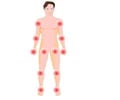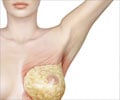Ganglions - Treatment
Treatment for dorsal and volar wrist ganglions may be either conservative (non-surgical) or surgical.
- Conservative Treatment for ganglions-
Observation is many times the best "treatment" for wrist ganglions.
- Most of the wrist ganglions eventually go away by themselves.
- Activity often causes the ganglion to increase in size; this in turn would increase the pressure on the nerves and cause pain.
- The patient may be asked to wear a wrist brace or splint help in reducing the symptoms and allow the ganglion to decrease in size.
- If painful, one should wait till the pain decreases before doing exercises may be done to strengthen the wrist and to improve the range of movements.
- Closed rupture with multiple needle punctures is another option for non-surgical treatment of wrist ganglions.
- In this procedure, the cyst wall is punctured with a needle, and anti-inflammatory and numbing drugs are injected into the cyst.
- This treatment may shrink the cyst and could reduce the symptoms.
- There is a chance that the ganglion can reappear.
- Surgery for ganglions-
- It is usually performed when there is significant pain or when the cyst interferes with normal activity.
- It may also be done if the ganglion is pressing against the nerves in the wrist causing problems with movement and feeling in the hand.
- Surgery is usually done under local anaesthesia, but it can be done under a general anaesthesia as well.
There are two common options for the surgical treatment of the wrist ganglions.
- Excision, or removal, of the cyst is the second option.
- This is a very effective method where the stalk that connects the cyst to the joint capsule and a piece of the surrounding capsule is removed.
- A single incision is usually made, but depending on the location of the ganglion, a second incision may be necessary sometimes.
- A small incision is then made at the site of the ganglion.
- The tendons that are present across the wrist and in the fingers are retracted (or moved) out of the way.
- This allows the surgeon to see the ganglion and follow it down to place of attachment in the wrist capsule.
- Once the stalk is located the entire ganglion is removed including the area of attachment.
- Stitches are used to repair the joint capsule.
- The skin incision is also finally closed with sutures.
- The surgery for the volar ganglion is a little bit more complicated as the ganglion usually arises very close to the radial artery (the artery in the wrist used to feel someone's pulse). Sometimes, the volar ganglion even winds around the artery.










